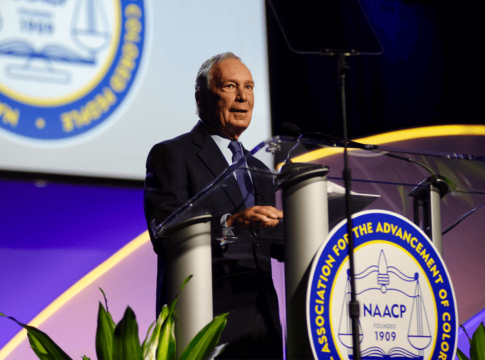Among those entering college for the first time, 45% of those going to 2-year institutions and 28% of those attending 4-year institutions do not return the next year. While transfers are abundant, and many students return to college later on, far too many students are failing to take advantage of the educational opportunities available to them because they are not college-ready. The problem is exacerbated by lax high-school graduation standards and the ease with which students can obtain grants and loans to go to colleges eager to capture the federal dollars they bring with them.
Common Core supporters believe that successful implementation of these new state standards will ensure that students are ready for college upon receipt of a high school diploma. That promise might be fulfilled if states asked students to pass examinations demonstrating college readiness before receiving an academic high school diploma. (A general diploma could be given to those not oriented toward college).
Persuading 50 states to adopt a common set of demanding high school examinations is a tall order, but the federal government, without interfering with state prerogatives, could achieve much the same objective simply by conditioning the availability of federal loans and grants on demonstrated evidence of college readiness. Before receiving a federal grant that never needs to be repaid (as is the case with Pell grants and some loans), the recipient should demonstrate that they are worthy of support by passing an appropriate set of examinations.
The public seems to agree with such reasoning. In the 2014 Education Next poll, we found strong public support for state tests that would allow students to demonstrate their college readiness in order to be eligible for federal grants. Specifically, we asked:
Currently, the federal government provides financial aid for college to low-income students through programs like Pell Grants. Do you favor or oppose requiring these students to demonstrate that they are ready for college courses by passing a state test before receiving any federal student aid?
No less than 73 percent of the public favor such a policy, while just 19 percent oppose it. However, the level of support slips when respondents are told that “about 25% of these students go on to graduate from a 4-year college within six years.” Among the informed respondents, 66 percent favor a state-exam requirement, while 23 percent oppose it. Still, at least two-thirds of the public thinks students should demonstrate college readiness before receiving federal largess.
Despite high levels of public support for such tests, neither Democrats nor Republicans are willing to support such a policy reform. While college loans are a hot political issue, the focus is on the heavy financial burdens suffered by college alums and the low pay received by some college graduates. No one is prepared to make the case that federally supported students are so badly prepared upon entry into college that they are at high risk of dropping out, in part because faulty record-keeping precludes documentation of the seriousness of the problem.
Pell grants cost the American taxpayer a total of $41.7 billion in Fiscal Year 2011, the latest year for which information is available. That is more than triple the $13.7 billion figure appropriated for the program just four years earlier. Costs have risen as the number of eligible applicants increased from 5.1 million in 2007 to 9.2 million in 2011, a jump of no less than 80%. The number ticked up again to 9.3 million in 2012. The other cost driver is the generosity of the Pell grant itself. The maximum grant in 2011 was $5,645, up 25% from its $4,500 level in 2007.
The size of the grant depends upon the student’s financial situation. If the grant exceeds the tuition and fees of the college, the difference is remanded to the student a few weeks into the term in order to help defray other costs. Since tuition and fees at a community college in the United States run close to $3,000 per year (on average), students who live at home and are eligible for a maximum grant typically receive a check of around $2,500. Even if they drop out within a month, students are under no obligation to pay back the grant.
According to a report by the Hechinger Institute, some young people have figured out how to work the system in such a way that they can drop out of one college and then enroll in another, making themselves eligible for two rebates that can be used for living expenses. However, Congress has now put a cap on the number of Pell grants one can receive, so there is a limit to the number of times this scam can be executed.
Scams are not the principal issue. More important is college readiness. If Pell grants—and other government loan programs—are conditioned upon demonstrated readiness to make use of the opportunity, college-bound students would have a strong incentive to make the best use of their years in high school.
Unfortunately, the federal government does not collect systematic data on the persistence rates of the students to whom they give grants and loans. The first step is to document the obvious. Colleges and universities—public, private, and for-profit alike—should report to the government whether a Pell grant recipient or any other federally assisted student has completed the term for which they received a grant. That data should be made available to the public by institution. Once that information is available, the case for reform will develop.
– Paul E. Peterson



